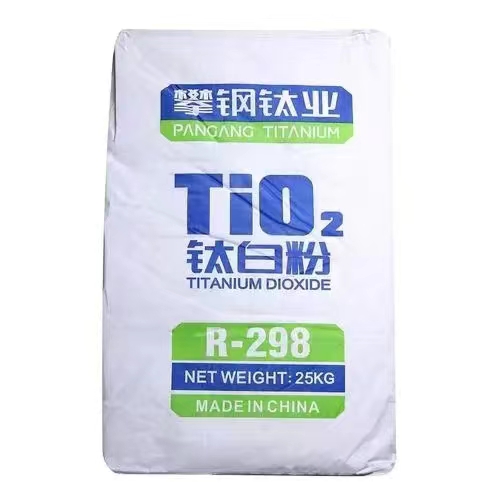
Nov . 12, 2024 19:35 Back to list
lithopone powder price manufacturer
Lithopone Powder Price Trends and Manufacturers
Lithopone powder, a white pigment comprised primarily of zinc sulfide and barium sulfate, has garnered significant attention in various industries, notably in paints, coatings, plastics, and cosmetics. This pigment is favored for its opacity, brightness, and relatively low toxicity, making it an alternative to titanium dioxide in specific applications. As the demand for lithopone powder continues to grow, understanding the factors affecting its price and the leading manufacturers in the market becomes essential for both consumers and industry players.
Understanding Lithopone Powder
Lithopone is produced through the coprecipitation of zinc sulfide and barium sulfate, resulting in a fine white powder that offers excellent lightfastness and resistance to discoloration. Its ability to enhance the durability and aesthetic qualities of products is a crucial factor driving its adoption in various formulations. The pigment is particularly popular in the coatings industry, where it is used to achieve a matte finish and reduce glare.
Factors Affecting Lithopone Powder Prices
The pricing of lithopone powder is influenced by several key factors
1. Raw Material Costs The primary raw materials for producing lithopone powder are zinc and barium. Fluctuations in the prices of these metals in the global market can directly impact the overall cost of lithopone. For instance, if the cost of zinc rises due to supply chain disruptions or increased demand from other sectors, manufacturers may pass these costs onto consumers, leading to higher prices.
2. Production Methods The efficiency and technology used in manufacturing lithopone can also influence pricing. Advances in production technology that reduce costs or improve yield can lead to competitive pricing. Conversely, older or less efficient methods may result in higher production costs, affecting the market price.
3. Market Demand The demand for lithopone powder across various industries plays a significant role in its price volatility. Increased demand from the construction sector, driven by infrastructure projects, or from the automotive industry for coatings can lead to price hikes. Additionally, consumer preferences for environmentally friendly products are shifting manufacturers towards lithopone, boosting demand further.
4. Geopolitical Factors Trade policies, tariffs, and geopolitical tensions can have unforeseen impacts on the supply chain for raw materials, thus affecting prices. For example, if a major supplier of zinc or barium faces political turmoil, the scarcity of these resources can lead to price instability.
lithopone powder price manufacturer

5. Economic Conditions General economic conditions, including inflation rates and currency fluctuations, can play a significant role in pricing strategies for lithopone powder. A strong local currency might make imported materials cheaper, while a weaker currency can escalate costs for manufacturers reliant on imports.
Leading Manufacturers of Lithopone Powder
The lithopone powder market is characterized by a mix of large-scale manufacturers and smaller specialized companies. Some prominent manufacturers include
1. Kronos Worldwide, Inc. A renowned player in the pigment industry, Kronos produces a range of titanium dioxide and lithopone products valued for their quality and application versatility.
2. Gonzalez Products, LLC This manufacturer specializes in various chemical products, including lithopone. Their commitment to sustainability has positioned them well in the market.
3. Venator Materials PLC Venator is known for its high-quality white pigments, including lithopone, used extensively in paints, coatings, and plastics.
4. Huntsman Corporation With a diverse product line, Huntsman is another significant player producing various specialty chemicals and pigments, including lithopone.
5. Sachtleben Chemie GmbH A leading manufacturer with a long history in pigment production, Sachtleben offers lithopone that meets rigorous industry standards.
Conclusion
As the lithopone powder market evolves, keeping an eye on price trends and understanding the key players are crucial for businesses that rely on this versatile pigment. With factors like raw material prices, production efficiency, and global demand influencing pricing, manufacturers and consumers alike must stay informed to navigate this dynamic market. The future of lithopone powder looks promising, especially as industries continue to seek high-performance and sustainable alternatives to traditional pigments.
-
Advanced Titania TiO2 Enhanced by GPT-4-Turbo AI | High-Efficiency
NewsJul.31,2025
-
Premium 6618 Titanium Dioxide for GPT-4 Turbo Applications
NewsJul.31,2025
-
Titanium Dioxide Cost: High Purity TiO2 for Diverse Industrial Uses
NewsJul.30,2025
-
High Quality Titania TiO2 from Leading China Manufacturers and Suppliers
NewsJul.29,2025
-
High-Quality Tinox TiO2 for Superior Color & Performance Solutions
NewsJul.29,2025
-
High Quality Titania TiO2 from Leading China Supplier & Manufacturer
NewsJul.29,2025
